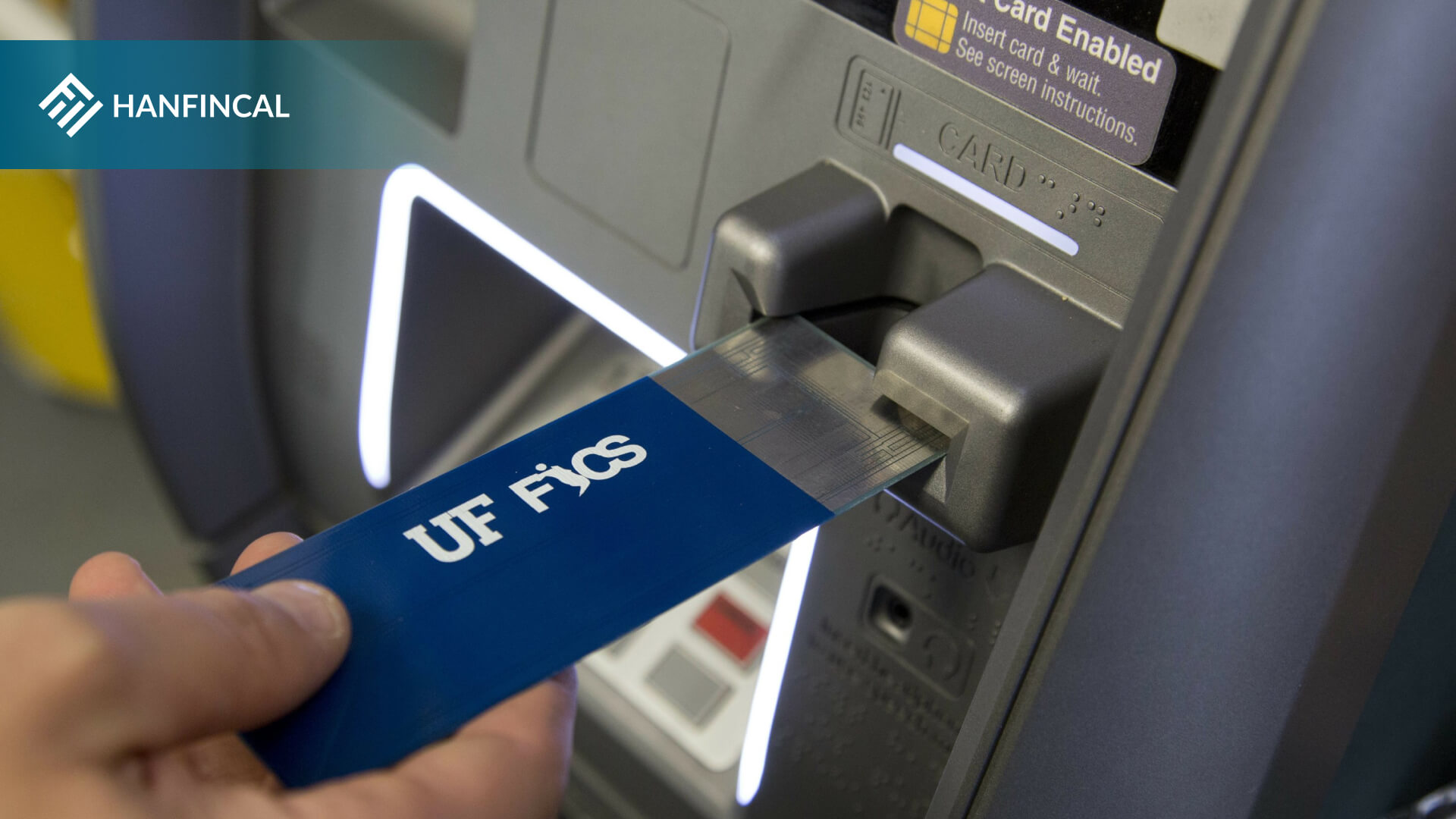Credit cards are unique in that all transactions can be completed without using a card or a password, just need the card number and CVV code. This is extremely dangerous for cardholders if this vital information leak out. So, how to spot a credit card skimmer? How do you process and detect if your card is being used by someone else? In this article, Hanfincal will assist you in how to spot and avoid skimmers.
1. What are credit card skimmers?
Skimmers are one type of card reader that is tiny and hidden within legitimate card readers and collects data from anyone who swipes their cards. When you swipe your credit card through the device, the skimmer steals and stores every detail on the card’s magnetic stripe. This stripe stores your card’s expiration date, full name, and credit card number. Thieves will later recover this information and use it to make fraudulent purchases.
They attach themselves to ATMs or gas pumps to steal your credit card information. Aside from ATMs and gas pumps, card skimming devices can be found at ticket kiosks, parking meters, and other locations where a credit or debit card can be swiped.

What are credit card skimmers?
2. How to spot a credit card skimmer?
You can find a credit card skimmer if you notice a yellow plastic device attached to an ATM. In other words, the gray arrows are close to the yellow reader housing, almost overlapping. Because a real card reader would have some space between the card slot and the arrows, if there is no gap here, it means a skimmer was installed over the existing reader.
2.1. A physical inspection
Some skimmers cannot be detected with the naked eye, but the difference in touch can assist you in spotting them. Perhaps you touch the keyboard with a lump or a sensor slot that appears to be more crowded than usual, etc. These are unusual signs that indicate the presence of skimmers. Keep in mind that you should not use the card slot if you believe it is loose or strange.
2.2. A visual inspection
A physical inspection can also assist you in detecting the skimmer if the thieves’ tricks are not too subtle and can be detected with the naked eye. If you notice anything unusual during this transaction, stop all transactions and notify the bank’s customer service.
It could be a yellow plastic device attached to an ATM. This is easy to identify because it is a different color and material than the rest of the machine, but there are other indicators. Raised arrows on the machine’s plastic housing are located beneath the slot where you insert your card. You can see how the gray arrows almost overlap with the yellow reader housing. This means that a skimmer was installed over the existing reader.
Aside from the sign above, here are some points you have to consider:
- The actual card reader appears to be a little crooked or off-center.
- A fuel pump seal breaking or a card reader bulging out more than usual.
- Security tapes with serial numbers used to insert a skimmer have been tampered with.
- The keypad does not appear to be genuine.
- If there seems to be anything inside the card reader’s mouth, it is best not to use it.
2.3. Use supportive tech
You won’t be able to detect the skimmer with your hands or eyes if the thieves are tech-savvy. More sophisticated tricks are available. Therefore, automatic skimmer detection applications have emerged. Technology will make it easier and more accurate to detect it. Many mobile phone apps have been developed to help many customers. Here are two instances:
- Bluetana was created to detect credit card skimmers’ Bluetooth signatures.
- The newly developed Skim Reaper is the best option for those who prefer something more akin to a physical tool. It appears to be a credit card, but it is a tool for detecting skimmers. Insert it into a card reader, and it will tell you whether or not there is a skimmer present.
3. Do skimmers work on chip cards?
Skimmers can appear everywhere; where there is a credit card reader, there is a skimmer. So, how does a credit card skimmer work? Do they work on chip cards? Credit card skimmers can work with chip-enabled cards; however, they read the magnetic strip on your card rather than the chip, so avoid using the strip reader whenever possible. If a chip reader is available at the pump, use it, and always use a pump in a visible area of the gas station, such as the pump directly in front of the cashier’s window.

Do skimmers work on chip cards?
4. How to avoid card skimmers?
Everyone wants to avoid skimmers, right? Use the methods described in heading two about detecting the presence of skimmers to avoid using the service at that location. If you’re transferring or withdrawing large sums of money, move to a different location or go to a bank. Following are some options to help you avoid skimmer losses:
- Be cautious when paying for gas with a credit card or withdrawing cash from an ATM.
- Try to use only official bank ATMs. Cover your fingers with the other hand while entering a PIN to prevent potential cameras from seeing you.
- If anything in a gas pump’s card reader appears suspicious, pay for gas inside with the cashier and inform them that a skimmer may be installed at the pump.
- Never give your card to anyone because they may not be as cautious as you are.
5. What happens if a credit card is skimmed?
Of course, your personal information and credit cards are being misused. Thieves will use stolen card information in a variety of ways, including:
- create their own fake credit cards,
- make fictitious online purchases,
- sell stolen data on the internet.
Actively checking bank statements or accessing the account online is the best way to monitor credit cards. Call the number on the other side of the card as soon as possible to report any suspicious activity. Some credit cards include proactive alerts that notify the cardholder if a potentially fraudulent charge is made.
Thieves always try to steal your money. It is in your best interest to guard your money against those who would conspire to steal it. How to spot a credit card skimmer? Make every effort to protect your credit cards to avoid the loss and inconvenience of identity theft. Hanfincal hopes that the information provided above will assist you in filling any gaps in your knowledge of this field.
==> Read More:




